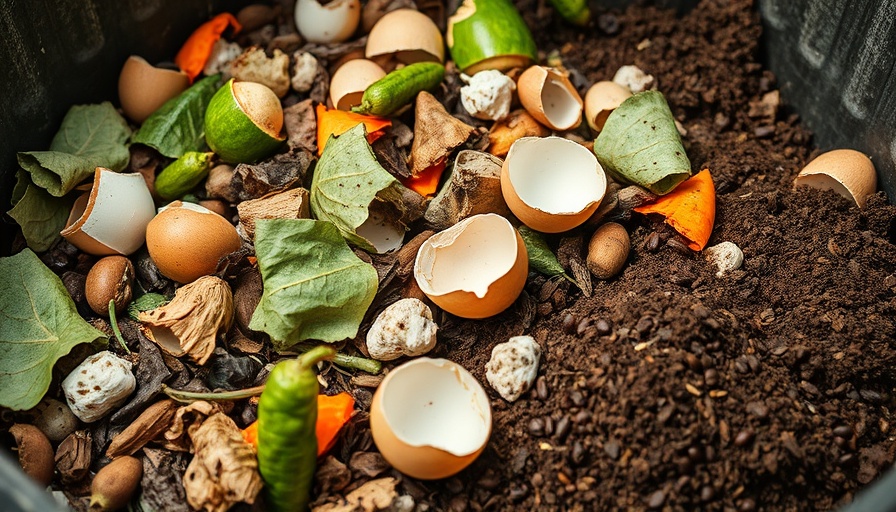
Unlock the Secrets to Composting: Transform Your Garden!
Composting is akin to preparing a nutrient-packed smoothie for your garden, made from often-overlooked kitchen scraps and yard waste. This natural process takes organic materials like vegetable peels, coffee grounds, and autumn leaves, converting them into a rich, soil-like substance known as compost. Dubbed 'black gold' among gardeners, this compost enriches the garden and plays a critical role in reducing landfill waste while fostering a healthier planet. If you find composting daunting, fear not—this comprehensive guide aims to simplify the process, backed by intriguing statistics and practical advice.
Embracing the Importance of Composting
So, why should you bother with composting? It’s not merely about crafting free fertilizer; this small, personal act leads to significant environmental benefits. According to the U.S. Environmental Protection Agency, food scraps and yard waste account for roughly 30% of all waste sent to landfills—approximately 66 million tons every year in the United States alone. By composting, we can redirect this waste from landfills, where it would otherwise emit methane— a greenhouse gas that is 25 times more potent than carbon dioxide.
Considering composting as nature’s recycling method makes it easier to understand its benefits. Rather than throwing away scraps like banana peels, you’re enhancing soil with life-giving nutrients. Furthermore, studies show that compost improves soil structure, retains moisture, and decreases the need for chemical fertilizers that may damage local ecosystems. A recent 2023 study from the University of California indicated that soils amended with compost resulted in up to a 20% increase in crop yields while simultaneously reducing water usage by about 10%—a win-win for gardeners and the environment!
The Science of Composting: Nature’s Decomposers at Work
Think of composting as organizing a microscopic gathering. At this affair, diverse organisms such as bacteria, fungi, and other microbes collaborate to break down organic materials. These tiny decomposers flourish in a balanced environment comprising carbon-rich “browns” (like dry leaves or cardboard) and nitrogen-rich “greens” (like fresh-cut grass or kitchen waste). To facilitate decomposition, they need oxygen—which comes from turning the compost pile—and moisture, reminiscent of a squeezed sponge.
This process occurs in stages:
- Mesophilic phase: Microbes heat things up, breaking down simple sugars.
- Thermophilic phase: Temperatures can soar to 140°F, eliminating pathogens and weed seeds.
- Curing phase: The compost cools, transforming into the stable, nutrient-rich product you’ll eventually use.
Fun fact: A well-maintained compost pile can reach temperatures sufficient to cook an egg! This heat underlines composting's efficacy in transforming waste into safe, enriched material.
Getting Started: Simple Steps to Begin Composting
You don’t require elaborate tools to venture into composting—just some space and a bit of guidance. Here’s what you’ll need:
- A compost bin or pile: Your choices range from DIY piles to tumblers or stationary bins. A basic compost bin can cost as little as $20 or be constructed from free pallets.
- Browns and greens: Achieve a 3:1 ratio of carbon-rich browns (straw, dry leaves) to nitrogen-rich greens (fruit scraps, fresh grass).
- A pitchfork or shovel: Necessary for aerating and turning the pile.
- A small bucket: Useful for collecting kitchen scraps indoors.
- A source of water: To maintain moisture levels in the compost.
If space is an issue, don’t worry! Consider a worm bin (vermicomposting) for indoor or apartment composting. Red wigglers are remarkable little workers, converting your scraps into nutrient-rich compost.
The Environmental Impact of Composting: More Than Just Garden Goodness
Beyond boosting your garden, composting carries substantial environmental relevance. In urban areas like Folsom & El Dorado Hills, California, where residents often seek DIY projects, the potential for waste reduction is immense. By composting, you’re not just tending to your garden; you’re contributing positively to the ecosystem.
Additionally, the production of compost helps in reducing the carbon footprint associated with transporting waste to landfills. According to the U.S. EPA, reducing the volume of waste sent to landfills is vital in curbing greenhouse gas emissions and conserving resources. An action as small as composting your food waste can culminate in broader benefits for the community and environment.
Frequently Asked Questions About Composting
How long does it take to make compost?
It can take anywhere from a few weeks to several months, depending on how well you manage your compost pile and the materials used.
Can I compost meat or dairy products?
While some composters do, it's typically not recommended due to the risk of attracting pests.
What’s the biggest mistake beginners make when composting?
A common error is an improper balance between browns and greens. Maintaining the right ratio is critical for efficient composting.
Ready to Get Started?
Armed with knowledge about composting, it’s your turn to take action! Create a compost pile or bin in your outdoor space, apply these insights, and make a difference for your garden and the planet. As you embark on this sustainable journey, remember that every bit of waste reduced is a win for the environment. Your garden—and the environment—will thank you!
 Add Row
Add Row  Add
Add 




Write A Comment